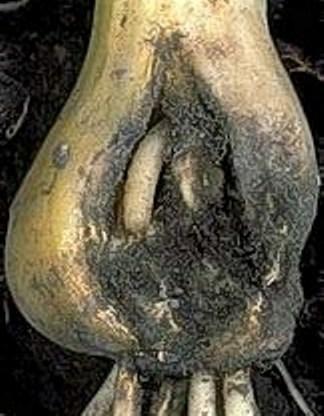|
Onion Maggot
View more pictures: Bing Images Google Images Yahoo Images Common names: Onion Maggot Scientific name: Hylemya antiqua Region: This fly is found in northern United States and southern Canada. Life cycle: This insect produces two to three generations each year and hibernates in the soil as a pupa. Physical Description: This gray or brown fly has a humped back, large wings and is 1/4 inch long. The full grown maggot is pearly white, legless, and about 1/3 inch long. Like the cabbage maggot, this pest is blunt ended and tapers to a point at the head. The cylindrical eggs are white and are laid at the base of plant or in bulbs. Feeding characteristics: This pest attacks onions by tunneling into stems and bulbs. All plants are susceptible at any age. One maggot alone can kill many seedlings by eating the plant from beneath the ground. When many maggots join together, they can do substantial damage. The maggots usually enter the onion at the base attacking the roots and tunneling upward as much as two inches. Controls: One of the most effective methods of control is found in the method of planting. When onions are planted in neat rows, it makes it very easy for the maggots to go from one root to the next. Since they need more than one seedling to survive, you can cause them to starve to death by planting the onions throughout your garden. This also helps the other plants, since the strong onion smell repels many garden insects. You can also try adding sand or wood ashes to the to player of planting rows. Or, intercropping with Radishes to attract the egg-laying flies, then destroy them before they enter your Onion crop. Diatomaceous earth can also be applied to the base of plants. Return from Onion Maggot to Insects M-P Encyclopedia of Garden Insects |
